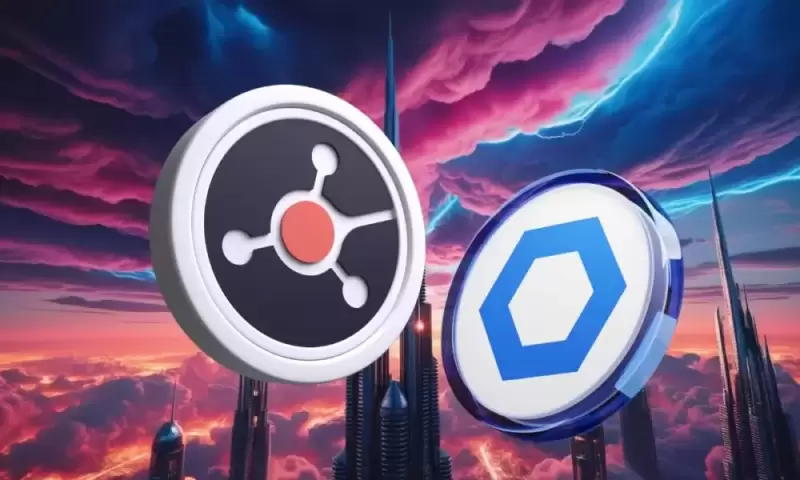 |
|
 |
|
 |
|
 |
|
 |
|
 |
|
 |
|
 |
|
 |
|
 |
|
 |
|
 |
|
 |
|
 |
|
 |
|
Cryptocurrency News Articles
BTCFi Ecosystem Observation: CoredaoOrg, Buildonbob, and Usecorn
Nov 04, 2024 at 04:08 pm
This year, as the BTCFi narrative continues to evolve, the on-chain liquidity of BTC assets has gradually become the focus of major ecosystems and protocols.

In the past six months, as the BTCFi narrative continues to evolve, the on-chain liquidity of BTC assets has gradually become the focus of major ecosystems and protocols. With the launch of BTC scaling solutions and the rise of BTC LSTs, BTC is transforming from a static store of value into an asset that can participate in more on-chain yield scenarios, enhancing its application potential within the entire DeFi ecosystem.
Among them, Core, BOB, and Corn are representative growth cases in the BTCFi space for the second half of the year: Core focuses on leveraging large BTC LST assets during the growth phase; Corn quickly captures the incremental market through its collaboration with Pendle to introduce points derivative play; BOB attracts liquidity through a rich ecosystem and liquid staking services; various ecosystems' series of actions around "yield" have greatly activated the liquidity of BTC assets. In the future, as BTC liquidity is gradually released, the on-chain accumulation scale of assets in the BTCFi ecosystem still has significant growth potential.
1. Background
1.1 On-chain Liquidity Pathways for BTC Assets
The flow direction of BTC and its backed assets on-chain can be divided into the following three layers:
BTC is transferred to various L1, L2, and sidechain networks through cross-chain bridges, generating a primary round of BTC-backed assets, including wrapped BTC, LSTs, and derivative assets.
BTC-backed assets are further used in various DeFi applications, such as lending, points trading, and DEXs, to obtain different yields and participate in more granular on-chain strategies.
Through the aggregation of DeFi applications, a secondary round of derivative assets is generated, such as wstETH, bETH, and mSOL, which can be further used in other DeFi applications to obtain yields.
1.2 Current Status of the BTC Asset Market
Overview of BTC-backed Asset Issuance and Application
From the issuance of BTC-backed assets on the three major networks: Ethereum, Arbitrum, and BNB, it can be seen that centralized custodial issued wrapped BTC still occupies the vast majority of market share, with $WBTC (156.1K supply) and $BTCB (65.3K supply) together accounting for over 75% of the total circulation of BTC-backed assets. Additionally, BTC LSTs such as $LBTC (10.5K supply) and $SolvBTC.BBN (8K supply) have rapidly grown in recent months driven by the BTC (re)staking narrative, becoming another emerging force in the BTC-backed asset market.
As the most consensus-driven and largest market cap asset, the main application scenarios for BTC-backed assets are concentrated in lending protocols. For the largest $WBTC and $BTCB, their largest downstream applications are in Aave v3 and Venus protocols, respectively, with TVL accounting for over 20% of their total supply, reflecting the demand for relatively stable returns in the BTCFi space.
https://dune.com/optimus/lombard
Overview of BTC LST Issuance and Application
Currently, the total market size of BTC LST is approximately 25.1K BTC, with the two major protocols Lombard and Solv Protocol accounting for over 70% of the market share. The absorption and issuance of BTC LST directly impact the liquidity and accumulation of BTC assets across various chains. Notably, Solv has had a significant impact on the TVL of various chains, bringing in a net inflow of $309.7M and $177.8M to Core and Scroll, respectively, significantly enhancing the asset scale of these two chains.
Compared to wrapped BTC issued through centralized custodial models, BTC LSTs as yield-bearing assets have expanded into richer application scenarios. In addition to lending protocols, the points trading market has become another important downstream application for BTC LSTs. Avalon and Pendle are the protocols with the most capital accumulation in the "lending" and "points derivative market" segments, achieving win-win growth alongside the development of BTCFi and BTC staking narratives.
https://dune.com/optimus/lombard
2. Asset Accumulation Strategies in the BTCFi Ecosystem
2.1 Core: Focusing on Incremental Assets and Token Incentives to Drive Ecosystem Growth
Basic Information
Core is an L1 scaling solution driven by BTC, allowing users to earn passive income through non-custodial Bitcoin staking without the need to transfer or wrap BTC. Since its launch in April 2024, over 7,500 BTC have been staked on Core, with the network's security protected by BTC's inherent security. In July 2024, Core introduced a dual staking mechanism for BTC and CORE. Users can stake BTC to earn risk-free basic returns and stake the native token CORE for additional rewards, with the distribution of rewards linked to the amount and duration of CORE staked. The introduction of the dual staking mechanism has further driven the growth of
Disclaimer:info@kdj.com
The information provided is not trading advice. kdj.com does not assume any responsibility for any investments made based on the information provided in this article. Cryptocurrencies are highly volatile and it is highly recommended that you invest with caution after thorough research!
If you believe that the content used on this website infringes your copyright, please contact us immediately (info@kdj.com) and we will delete it promptly.
-

-

-

-

-

- Dogecoin (DOGE) price holds a crucial technical level while flashing multiple bullish reversal signals on higher timeframes.
- Apr 03, 2025 at 11:20 am
- Market watchers now speculate whether the memecoin could see an extended rally toward previous highs. By Ali Martinez. Updated Apr 2, 2024 at 1:13 a.m. PDT.
-

-

-

-





























































